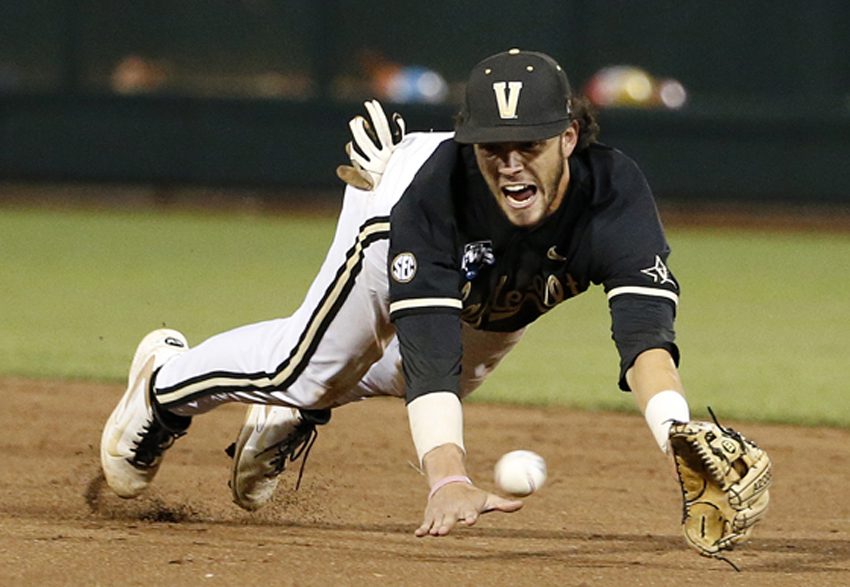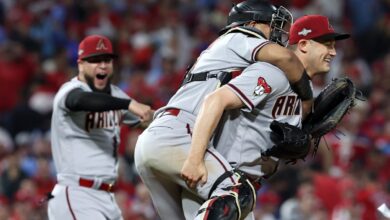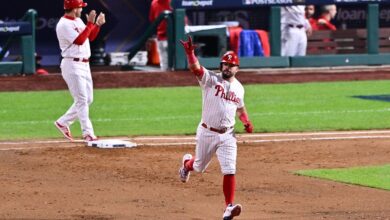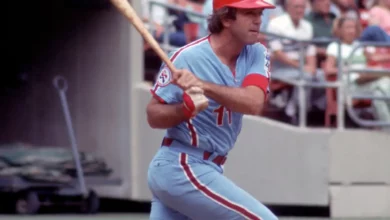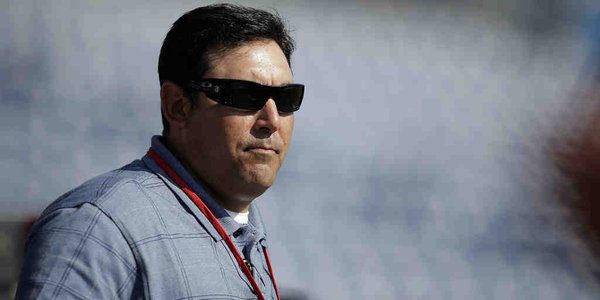

Things are bad, folks. The Phillies are 36-45 at the halfway point of the season — the worst they’ve been at a season’s middle since 1997. We all knew the sun of competitiveness was going to set at some point, but I’m not sure anyone, even the most pessimistic Phillies fan, could anticipate it would approach the horizon this rapidly. Now, Ruben Amaro, the man whose ineptitude is primarily responsible for the old, underachieving, decrepit roster you force yourself to watch every night, is about to make decisions that will determine the health of the franchise for the next decade.
Are anyone of you confident in Amaro’s ability to medicate the roster? Anyone? Neither am I. In fact, even while my fandom slowly numbs away as I continue to work in an environment that propagates neutrality, I find myself caring more than usual about the well-being of the Phils. I am experiencing an internal chasm. Do I want Ruben to succeed and give the Phillies a shot to win another World Series, be it sooner or later? Or, do I want him to fail and be removed so someone whose processes I can get behind is hired in his place? It’s not as clear cut for me as you might think. I’ve shaken Amaro’s hand. I’ve met his daughter. He’s not just a guy in a suit behind a microphone for me. I recognize his humanity. It’s awful and very un-Philadelphian of me. But I digress.
One major amputation that might come soon is the exile of Cole Hamels. Titans of the rumor mining industry are starting to hear whispers of Cole’s availability. They’ve set afloat generalities of Philadelphia’s demands like balloons filled to capacity with Amaro’s quixoticism. So before we’re startled by the popping of one of those balloons, let’s take a quick, logical look at what the Phillies might be able to get back in return for Hamels.
Be mindful as we talk through this that a) the new CBA has altered the negotiation landscape, and we’re not yet sure exactly how, but it’s probably bad for sellers and b) making up hypothetical trades is a fool’s errand, so I won’t be burning a ton of mental calories here. This is just a means of producing rational expectations and nothing more.
First we need to determine exactly how good Cole Hamel is. What will he give to whatever team trades for him? Well, that team is getting a 2-3 WAR pitcher likely to post 100 innings (remember, it’s half a season so those numbers are scaled) of low-3.00 ERA ball and who hasn’t had any health issues since early in his career. He’s not the delicate flower he was in 2009 when a 40-inning bump from the year before likely carried fatigue into his worst major league season (bad luck on balls in play didn’t help either).
From a scouting perspective you’re getting a pitcher who seems more likely to age well (should you extend his contract) than his peers since he’s not a fireballing, inefficient thrower with a violent arm action. He’s got baseball’s best change-up and has shown aptitude for adaptation when he added a cutter a few seasons ago. You’re also getting the first shot to negotiate with Hamels on an extension before he hits the open market. You’re not getting a draft pick as compensation if you don’t extend him since, under the new CBA, a player has to be on your roster on opening day to be eligible for that fallback option. This will depress Cole’s value. Conversely, the new wild card spot means more teams will have a chance to make the playoffs, making more teams buyers at the deadline. Nothing wrong with an increase in quantity demanded if you’re the Phils as that will boost his market. We’re just not sure as of yet how those factors will balance out. GMs probably aren’t sure yet, either.
So, what other pitchers have recently been traded in the last year of their deals to which we can approximate Cole’s value on the market? You don’t have to look far. Both current teammate Cliff Lee (when Seattle sent him to Texas) and Yankee southpaw CC Sabathia were traded under similar circumstances. They returned almost the same package of prospects. One highly regarded bat (Justin Smoak for Lee and Matt LaPorta for Sabathia) and a host of enigmatic other prospects who had an elite trait or two but were undoubtedly flawed. Of the secondary prospects, Blake Beavan became a so-so major league arm for the Mariners, while Michael Brantley is a second-division regular in center field for the Indians. So, it’s reasonable to expect the Phillies to get something similar. One elite prospect and one or two projects who might become useful if they’re scouted right and the Phillies develop them properly. It’s a return that I was optimistic about when I began writing, but now that I think about it, it’s actually pretty depressing, especially when you consider what LaPorta became and what it looks like Smoak is becoming. Prospects bomb out all the time.
So, if a trade of any sort goes down, however touted and ultimately helpful the newly pinstripe-adorned youngsters may turn out to be, the return is not going to overwhelm you to a degree where you’re fine with trading away the best homegrown pitcher the franchise has seen in nearly two decades. It certainly won’t cure the ills this hellish season has wrought on your psyche, and it’ll take a whole lot more than trading away one elite rental player to convince me the sun will rise again soon on Pattison Avenue. Prepare yourself for the fall. That is, if you don’t already feel the air rushing past your face as we all hurdle back towards Earth.


